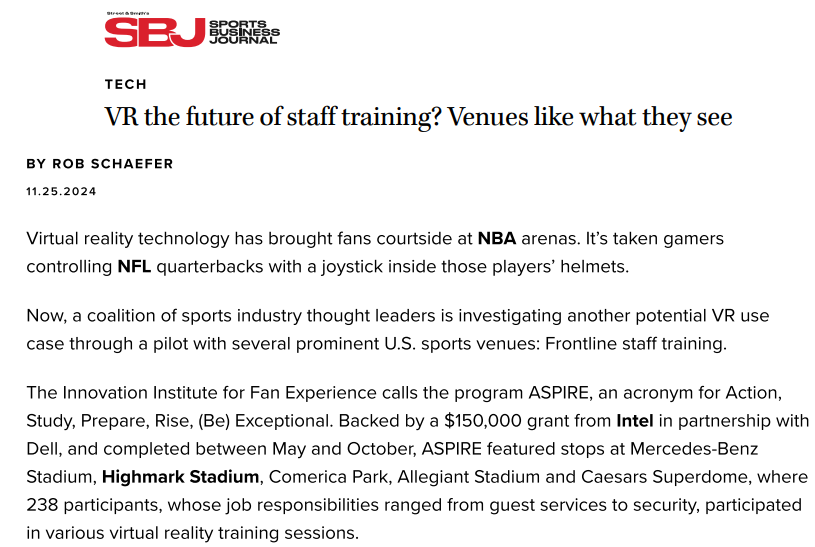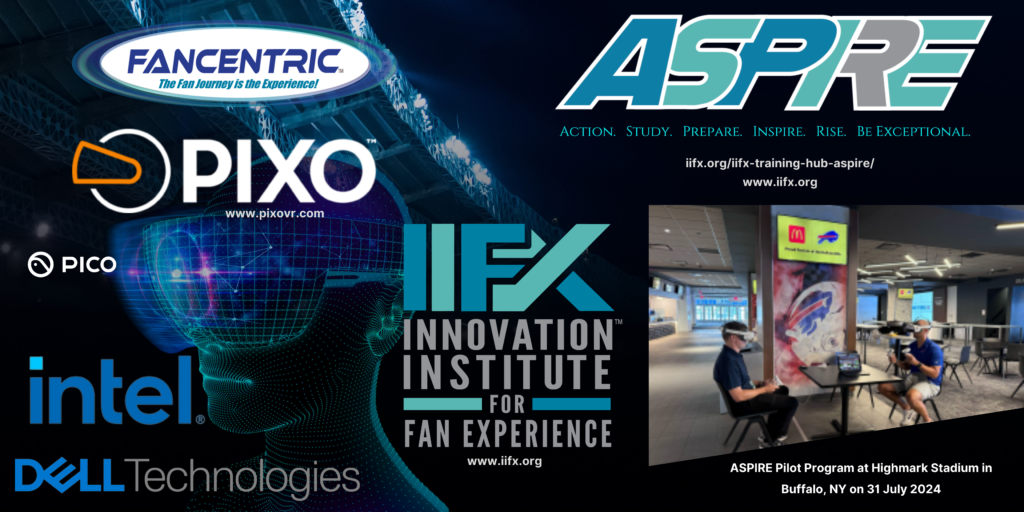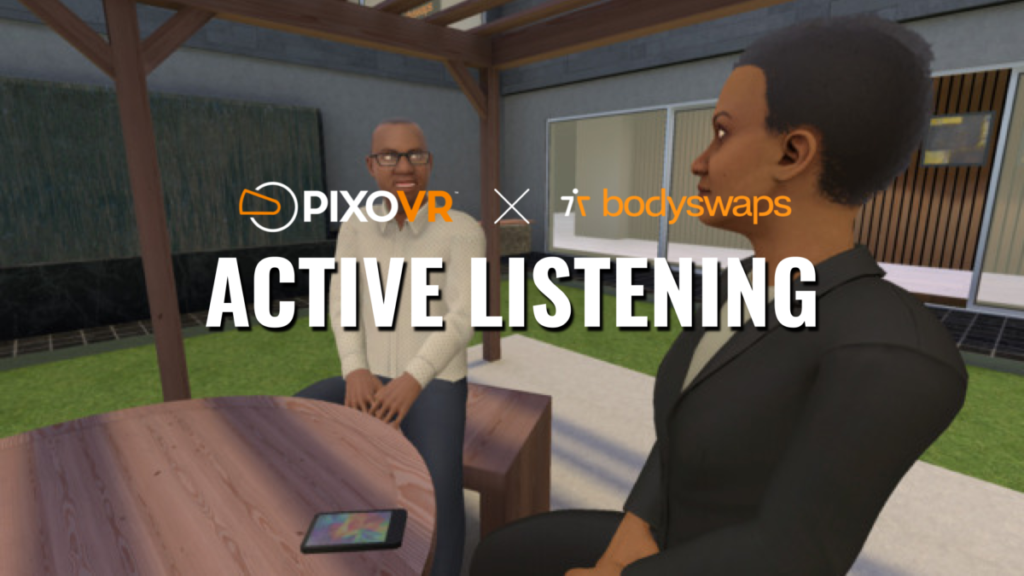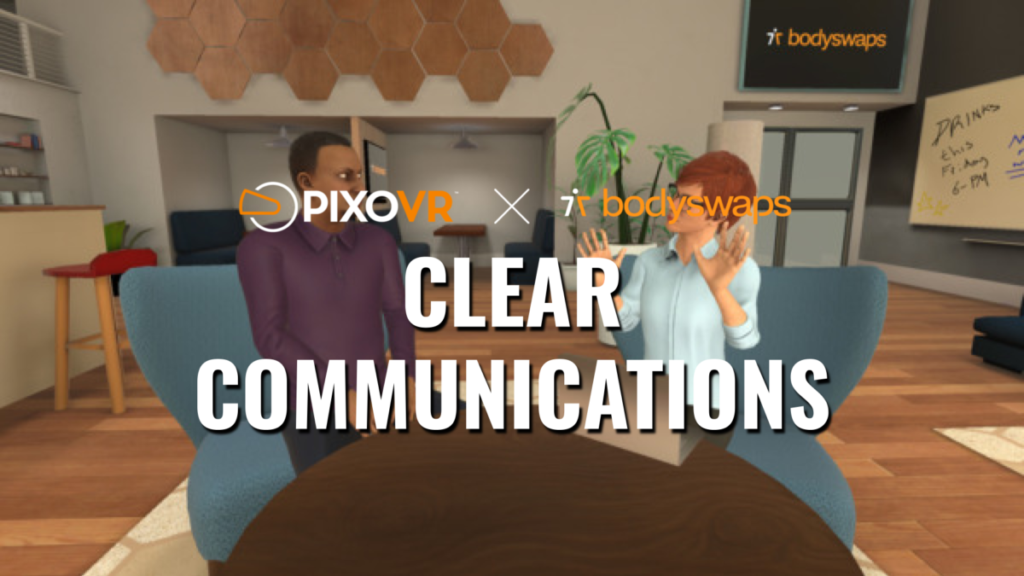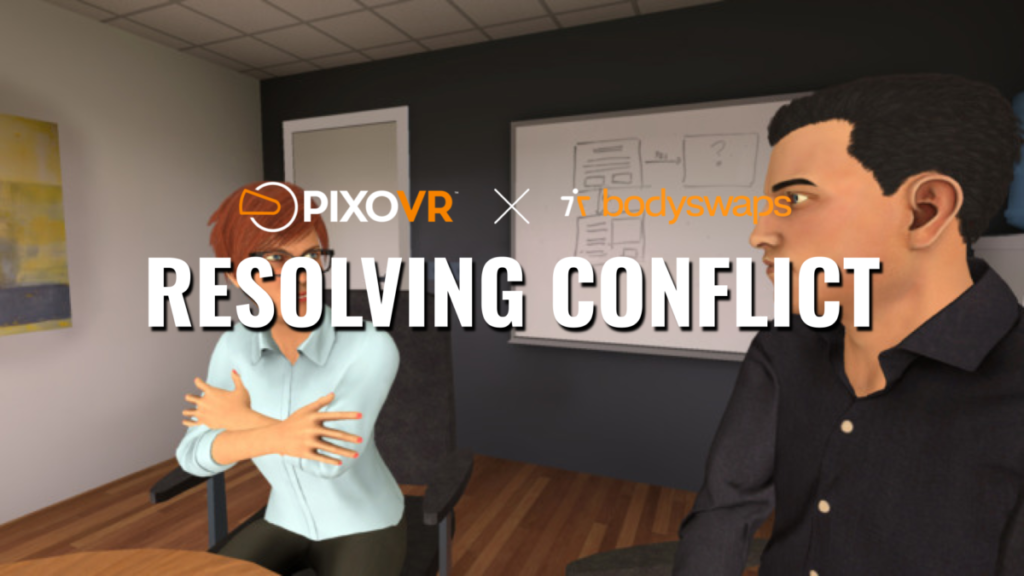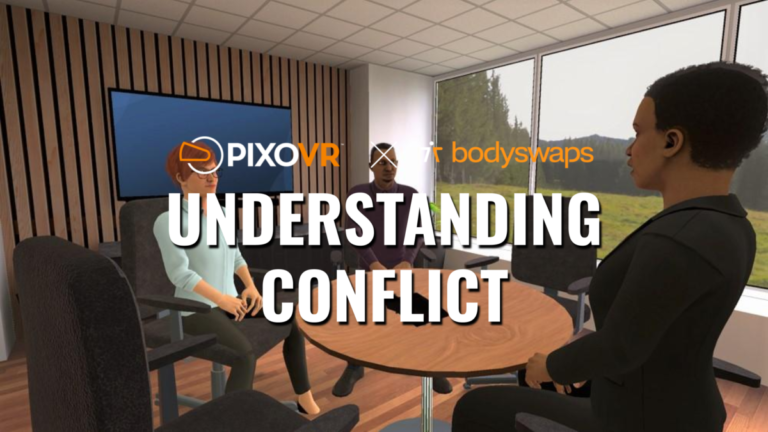ACTION. STUDY. PREPARE. INSPIRE. RISE. BE EXCEPTIONAL.

Our mission is to make work safer, more enriching, and career advancing for employees by making VR training possible for companies [and sports & entertainment venues] of all sizes.
Join IIFX and PIXO in Virtual Reality Training
Virtual Reality Training
for Sports & Entertainment Venues
Soft Skills Development Course Offerings
Virtual Reality has proven to be an effective way for employees to practice soft skills in a safe environment.
This virtual reality (VR) active listening training course teaches employees powerful techniques for communication that will significantly improve employee interpersonal skills. Great listening skills makes for more productive fan engagements, where communication is respectful.
The learning objectives for this training include:
Learning to identify poor listening behaviors such as: closed questions, interruptions, closed body language, minimizing emotions, judgmental statements, and talking about oneself.
Practicing good listening behaviors such as: asking open questions, clarifying rather than offering unsolicited solutions, not ignoring or minimizing emotions, keeping opinions to yourself, and not talking about yourself.
Learners using this clear communication VR training will enter an immersive virtual reality environment where they can fine-tune their skills. The learning objectives for this training include:
Learning to identify poor communication practices, including using filler words and jargon, lack of confidence, hesitation or a lack of conviction in statements, defensive or defeated body language, or lacking structure or precision in how you communicate.
Practicing good interaction skills by evaluating the other person’s availability, eliminating blame and subjectivity, making clear and concise asks that are built on facts, and maintaining visual contact, and open body language.
This virtual resolving conflict training puts employees into a VR scenario where they will experience workplace communication scenarios to learn a set of techniques to resolve issues. The employee can also use these techniques to coach a manager into better conflict management. The learning objectives for this training include:
- Observing a leader who is perpetuating workplace conflict
- Learning to identify the negative behaviors causing problems in the workplace
- Developing skills to help others address the source of their conflicts and to resolve them
- Practicing coaching others toward conflict resolution

This VR interview question training teaches students a proven technique to answer any job interview question in just three steps. The learning objectives for this training include:
- Practice analyzing interview questions (including curve balls) to identify what the interviewer seeks
- Discover a fail-safe three-step strategy for answering behavioral questions in a job interview
- Craft winning answers using the C.A.R. (Context, Action, Result) technique
- Practice verbal and non-verbal communication skills when delivering responses in an interview
This VR leadership training provides frontline staff and leaders with the tools to understand conflict and techniques to use to resolve that conflict. The learning objectives for this training include:
- Learning effective listening skills
- Acknowledging the need to be aware of stereotyping
- Identifying inappropriate behavior
- Practicing relationship-building skills
- Giving constructive feedback.
- Applying techniques to manage conflict

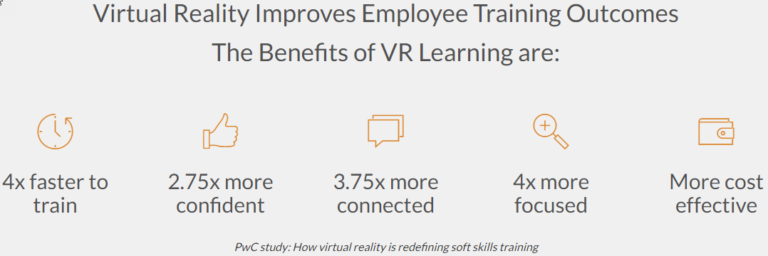
What is Virtual Reality Training?
Virtual Reality Training is the digital simulation of lifelike scenarios for training purposes. Trainees enter a 360°, active learning environment, experiencing sights and sounds that dissolve the barrier between virtual and actual reality. Using the headset and controllers, trainees look, speak, and move about freely in a 3D virtual setting, interacting with simulated real-world tools, machinery, and other trainees and instructors. Critically, with Virtual Reality, workplace scenarios that were once too difficult, expensive, or dangerous to train for, (such as emergency protocols and disaster preparedness, hazardous material spills, realistic heights training, etc.), become vastly more practical, cost-effective, and safe in an immersive simulation. When combined with story narratives and learning curriculum developed by subject matter experts, the result is trainees learning in the best way possible — through personal experience — significantly improving learning retention, job performance, team collaboration, workplace safety, and cost.


ASPIRE is made possible by Intel's generous grant and partnership with DELL Technologies

America's Semiconductor Leadership Starts with Intel
Intel Corporation (INTC) is an industry leader, creating world-changing technology that enables global progress and enriches lives. We stand at the brink of several technology inflections – artificial intelligence (AI), 5G network transformation, and the rise of the intelligent edge – that together will shape the future of technology. Silicon and software drive these inflections, and Intel is at the heart of it all.

We create technologies that drive human progress
Dell Technologies (NYSE:DELL) helps organizations and individuals build their digital future and transform how they work, live and play. The company provides customers with the industry's broadest and most innovative technology and services portfolio for the data era.
MILLENNIALS AND GENERATION Z - RECRUITING AND RETAINING THE MODERN WORKFORCE
According to the Bureau of Labor Statistics, Millennials and Generation Z will comprise more than 75% of the workforce by 2030. Longitudinal studies of Millennials across the globe between 2015-2019, show that Professional Development is a key concern. A 2017 Deloitte study revealed that 64% of Millennials planned to leave their current position by 2022 (Deloitte, 2017), confirmed by the Bureau of Labor Statistics in 2018, reporting tenure rates for Millennials hovering 1.2 years (age 20 -24) and 2.8 years (age 24-34) (BLS, 2018).
According to a report by Training Magazine, the average cost to train employees for small to medium-sized company was between $555-$1,504 per employee (Training Magazine, 2020). Service industry recruiting costs average $1,062 for each employee (Recruiter.com, 2020). The employee turnover rate for the sports and entertainment industry (pre-COVID-19) was 13% to 18% (Booz, 2018). The typical replacement cost for employees ranges between 16%-213% of annual salary, depending on the level of the employee (staff, supervisor, manager, executive).
What is most telling about surveys of Millennials pre-COVID-19 is their sincere desire to be afforded professional development opportunities (Atkins, 2018):
Express concern for lack of advancement opportunities
Say they are not engaged or connected
May stay if offered development opportunities
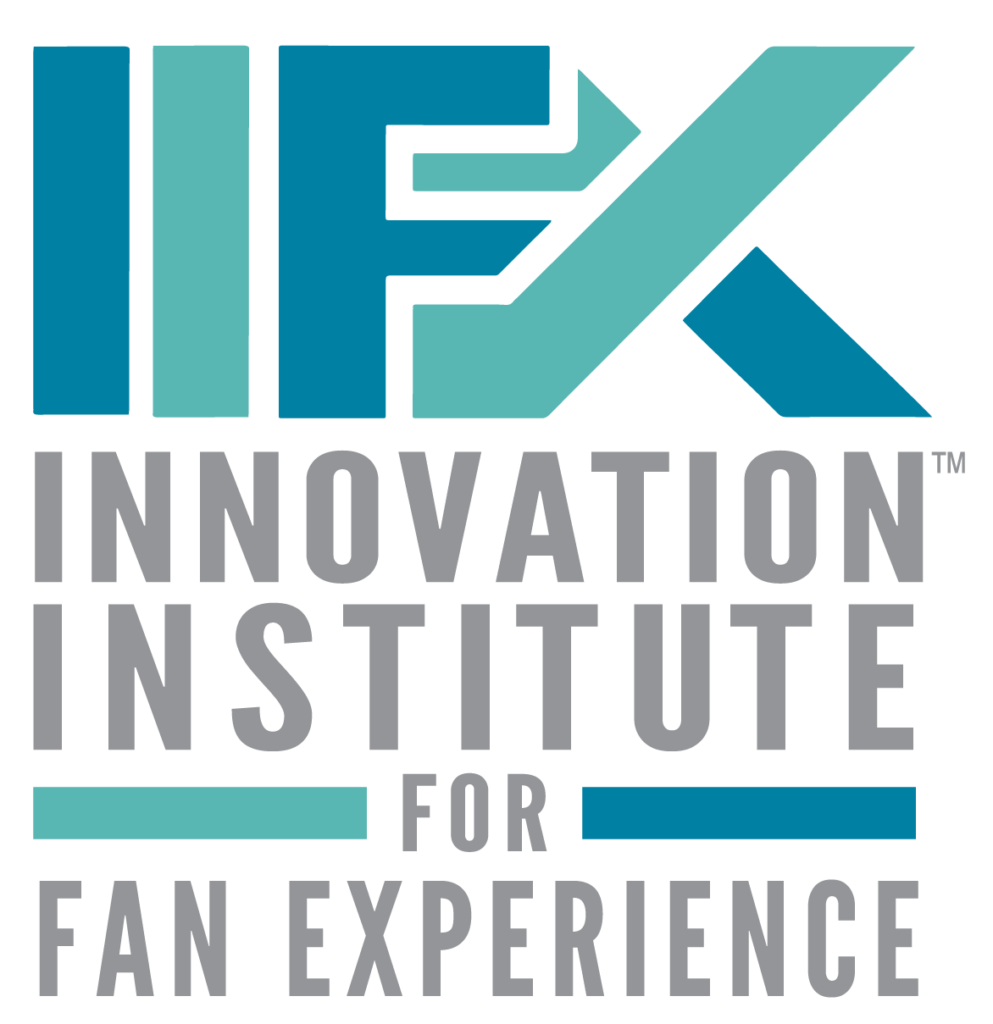
The Innovation Institute Leadership team made up of Staff, Alliance Affiliates and Distinguished Fellows is an unrivaled network of subject matter experts, thought leaders, technologists, futurists, trainers, and business leaders to assist sports and entertainment organizations. This group, along with our growing membership roster, represents the best the industry has to offer in expertise, services and products to meet the challenges of the “new normal”.

